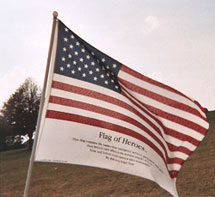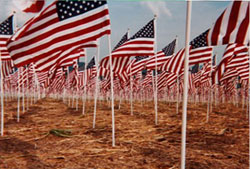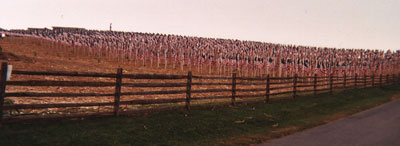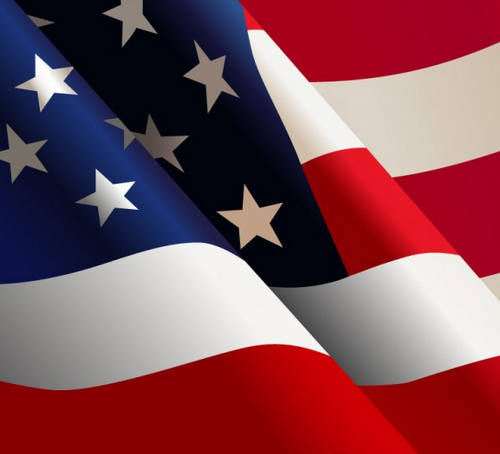Long time ago in 2004, almost 3 years after 9/11, Roseanne and I visited a cornfield in Western Maryland. No ordinary cornfield, but a very special one—within the National Park Service’s Antietam Battlefield.

The Park of gently rolling hills and fields of corn, located outside Sharpsburg, was established in 1890 to preserve the place where thousands died in the bloodiest single-day battle in American history. It was there, on September 17, 1862, that the Union Army of the Potomac attacked General Robert E. Lee’s Confederate forces as they invaded the North. On that fateful day, over 23,000 soldiers were killed or wounded—more than the deaths of all Americans in the entire Revolutionary War, the War of 1812, our war with Mexico, and the Spanish-American War combined. Antietam’s losses marked a turning point in the war, halting Lee’s invasion and, according to Park Service historians, sealed the fate of the Confederacy.
Even if one is rusty on American Civil War facts and statistics, visiting Antietam evokes images, sensations, and—for some—deep emotions that can be profound and lingering. Spanning the bucolic farmland below the Park’s modern visitor’s center, planted in tall corn as it was in 1862, meandering through the high ground of Dunker Church or walking along the “Sunken Road” where bodies of the dead and wounded in blue and gray had lain three deep, human senses are tuned to catch the faintest drift of battle sounds.
Maybe it’s the cry of men’s voices—perhaps the lingering battle cry of the 69th Regiment of New York, The Irish Brigade, shouting ‘faugh-a-balaugh, faugh-a-balaugh.’ Or the smell of smoke—is it from a nearby farmhouse, or from the more than 500 cannons that once perched on high ground? Or a tiny spot of red moving haltingly in the distance— is it a cardinal, or Clara Barton in her bonnet and red bow, tending to the wounded and dying, as she did well into that terrible night until she herself collapsed from lack of sleep and typhoid fever?
Too many Americans, this battleground symbolizes the terrible cost of human life and suffering of our Civil War and of all wars and conflicts.

Which brings me to the reason for our Antietam visit: A compelling article caught Roseanne’s attention announcing a “Healing Field™ 9/11 Memorial” to be created at Antietam Battlefield. The project called for placing over 3000 American flags along a grid of rows within the growing rows of corn. Each flag was to commemorate the victims and heroes killed in the terrorist attacks of September 11, 2001. The project mobilized and unified the local community as many volunteers turned out to plant the flags for the holiday weekend.
According to national Healing Field™ founder Paul Swenson, “I was trying to imagine how big a number 3031 [the total killed that day as seen on CNN’s web page] was and decided it would be appropriate to put up 3031 US flags…”
“I want the sensation to be that of walking through a cornfield of flags so an individual literally gets lost in the flags and feels the enormity of that number.”

The flags at Antietam indeed were planted like rows of corn in a vast open field. Their tall’ stalks’ of red, white and blue stood almost eight feet high, surrounded by green and golden meadows and hills of tall corn that once provided cover for soldiers, a bed for the dying, and cornhusks to dress soldiers’ wounds. The setting was poignant. And fitting.
Union General Hooker, marching toward the site known today as Miller’s Cornfield, his cannon trained on the corn, had reported in a note to General McClellan, “In the time I am writing, every stalk of corn in the northern and greater part of the field was cut as closely as could have been done with a knife, and the slain lay in rows precisely as they had stood in their ranks a few moments before.”
Antietam exists as a painful reminder of a terrible battle on a September day, 142 years ago. It helps us appreciate the cost of a devastating Civil War that claimed more American lives than were lost in both World Wars and subsequent conflicts in Korea, Viet Nam, and now the Middle East.
The national site also serves as an important instrument of healing, reminding us that our young nation not only survived and rebuilt, but moved on to become a stronger Union.
So too, the Healing Field stood as an important reminder of another loss, 139 years later, and as an equally important instrument of healing.
Meaningful ceremony helps many of us come to grips with the tragic, the inexplicable, or the unexpected. As Roseanne and I walked in silent ritual among the rows and rows of flags, stopping to read the names affixed to many of them, we honored our new dead—the 3,000+ men, women and children who died on another September morning—victims of another kind of ‘war.’
And this Memorial Day we honor our fallen heroes — those who have died for our freedom. And this weekend let us honor too, the resilience of the families, friends, and loved ones of all of our military service members, first responders, police, and ordinary citizens who pick up the shattered pieces of their lives every day and get on with living, trusting God and time to sow the seeds of healing. We are truly grateful for their sacrifice.

